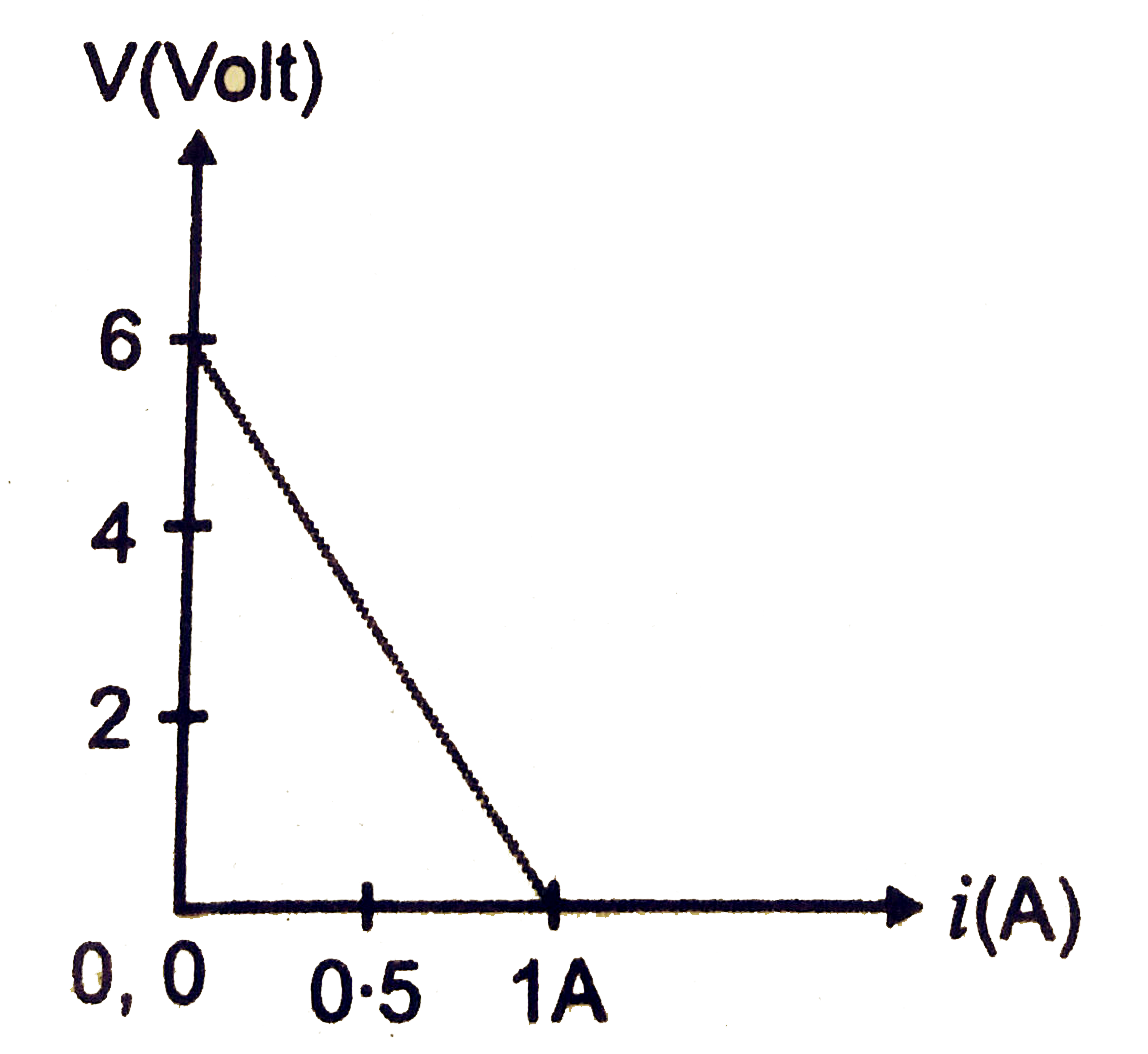A series combination of n identical cells has two cells P and Q with reverse polarities.IF emf of each cell is e and internal resistance is r, what is the potential difference across each of the cells P and Q?
The correct Answer is:⎡⎣2e⎛⎝23a⎞⎠⎤⎦
Topper's Solved these Questions
- CURRENT ELECTRICITY Book:CHHAYA PUBLICATIONChapter:CURRENT ELECTRICITY Exercise:EXERCISE ( HOT NUMERICAL PROBLEMS)
Explore 5 Videos
- CURRENT ELECTRICITY Book:CHHAYA PUBLICATIONChapter:CURRENT ELECTRICITY Exercise:ENTRANCE CORNER(ASSERTION REASON TYPE)
Explore 6 Videos
- CURRENT ELECTRICITY Book:CHHAYA PUBLICATIONChapter:CURRENT ELECTRICITY Exercise:EXERCISE ( PROBLEM SET-I)
Explore 41 Videos
- COMMUNICATION STSTEMBook:CHHAYA PUBLICATIONChapter:COMMUNICATION STSTEMExercise:CBSE SCANNER
Explore 28 Videos
- DIFFRACTION AND POLARISATION OF LIGHTBook:CHHAYA PUBLICATIONChapter:DIFFRACTION AND POLARISATION OF LIGHTExercise:CBSE SCANNER
Explore 27 Videos
Similar Questions
The ratio of the length of three metallic wires of the same mass and made of the same material is 1:2:3 when these three wires are connected in parallel and an external source of emf is connected with the combination,what will be the ratio of the current strengths through the wires?
View SolutionStatement I:IF a conducting wire is stretched to twice its length, the resistance became twice.
Statement II: For a fixed wire, the resistance is proportional to its length.
View SolutionThe current flowing through a wire depends on time as l=9t2+4t+1. What will be the amount of charge flowing through the cross section of wire in time t=1s to t=2s?
View SolutionIn the given block diagram of a receiver, identify the boxes labelled as X and Y and write their functions.

View SolutionHow does the angular separation between fringes in single slit diffracton experiment change when the distance of separation between the slit and screen is doubled ?
View Solutionn identical cells, each of emf epsilon and internal resistance r, are joined in series to form a closed cirucit. One cell A is joined with reversed polarity. The potential difference across any one cell is
View Solutionn identical cells, each of emf ε and internal resistance r, are joined in series to from a closed circuit. One cell A is joined with reversed polarity. The potential difference across each cell, except A, is
View Solutionn identical calls are joined in series with its two cells A and B in loop with reversed polarties. EMF of each shell is E and internal resistance r . Potential difference across cell A or B is (here n gt 4 )
View SolutionThe plot of the variation of potential difference across a combination of three identical cells in series, versus current is as shown in figure. What is the emf and internal resistance of each cell?
View Solutionn identical cells are joined in series with two cells A and B with reversed polarities. EMF of each cell is E and internal resistance is r. Potential difference across cell A or B is (n > 4)
View SolutionIf n identicals cells, each of emf E and internal resistance r, are connected in series. If two ends of this combination of cells are joined to each other without any external resistance. What will be the terminal potential difference across each cell?
View SolutionThere are N identical cells of emf E and internal resistance r connected in series with each other. But n cells are connected with reverse polarity and n lt N//2 . Effective emf and internal resistance of this combination are
View SolutionThe plot of the variation of potential difference across a combination of three identical cells in series, versus current is as shown in figure. What is the emf and internal resistance of each cell?

View SolutionThe plot of the variation of potential difference across a combination of three identical cells in series, versus current is as shown in figure. What is the emf and internal resistance of each cell?

View Solutionn identical cells, cach of emf ε and internal resistance r, are joined in series to form a closed circuit. Once cell (A) is joined with reversed polarity. The potential difference across each cell, except A, is
View Solution

